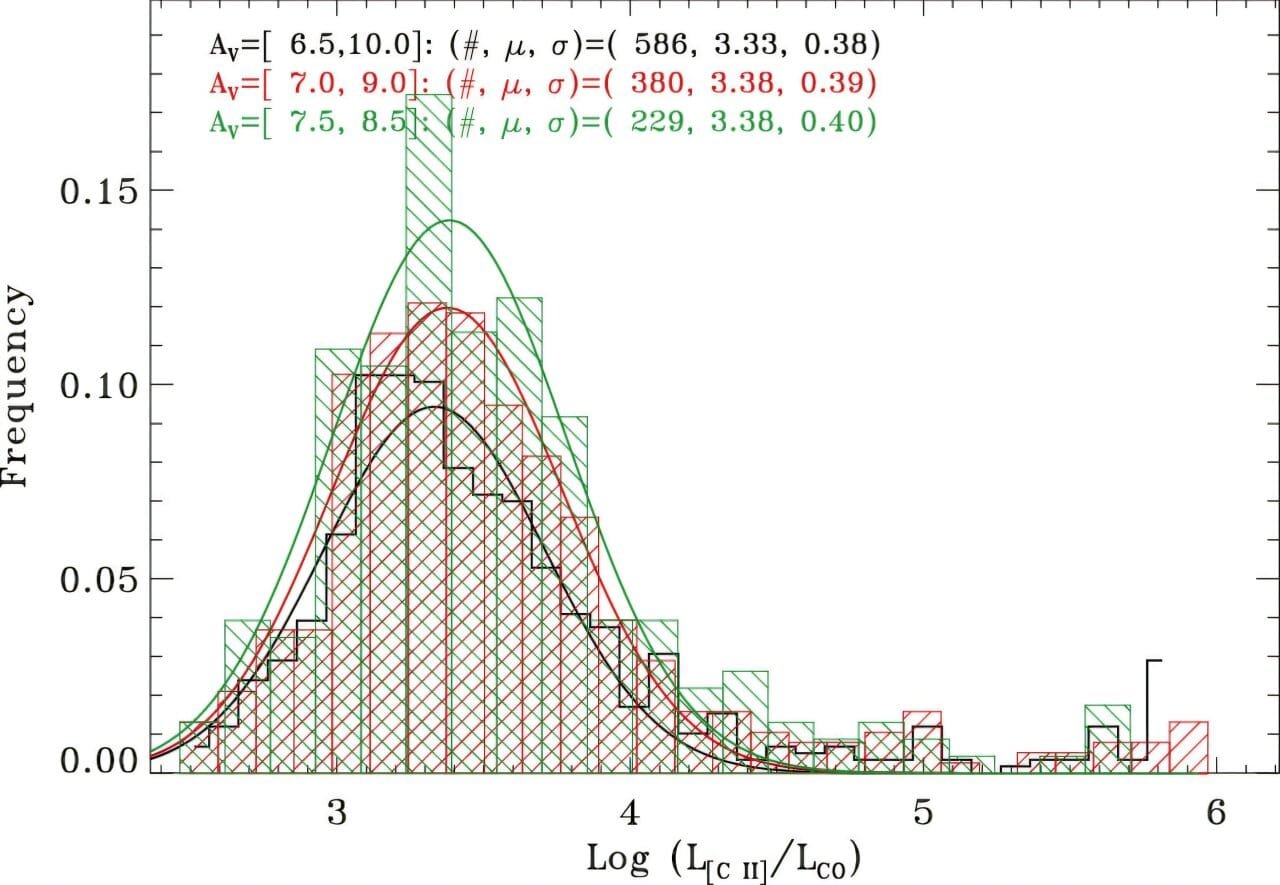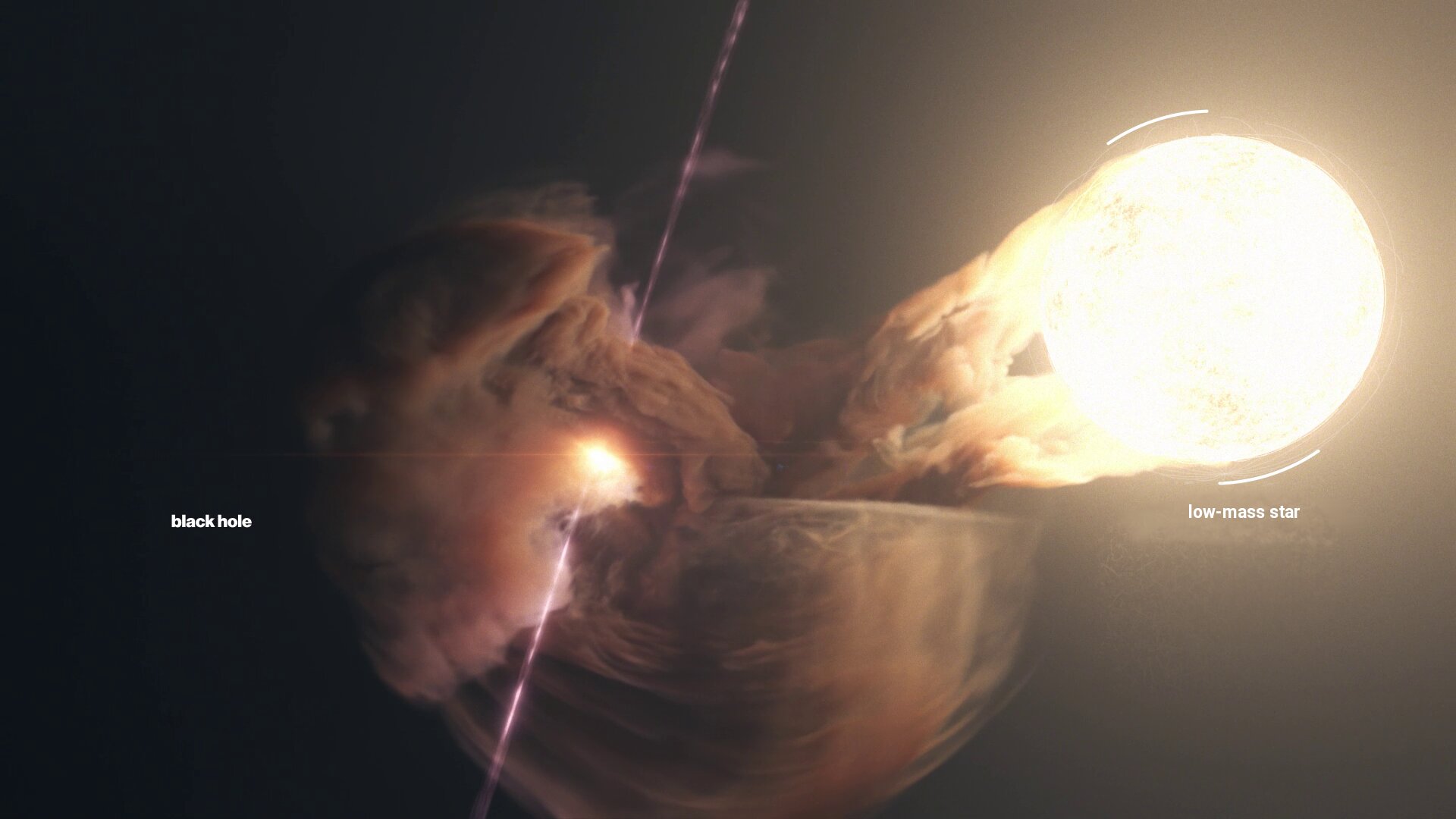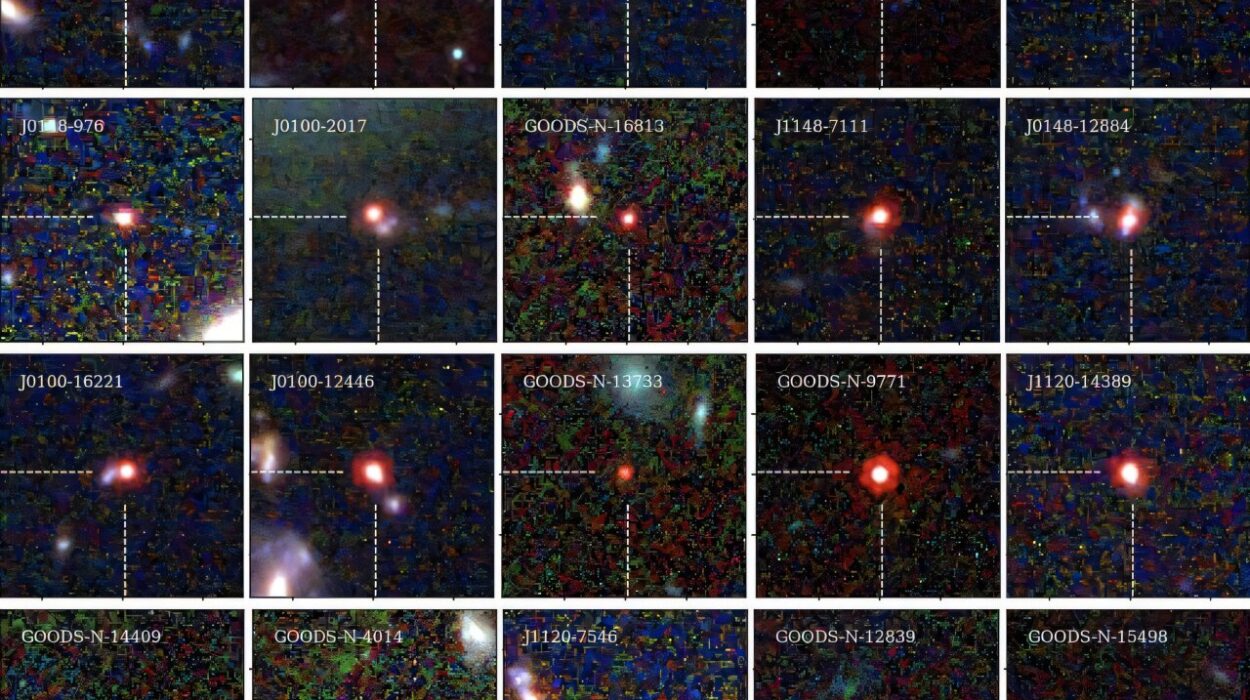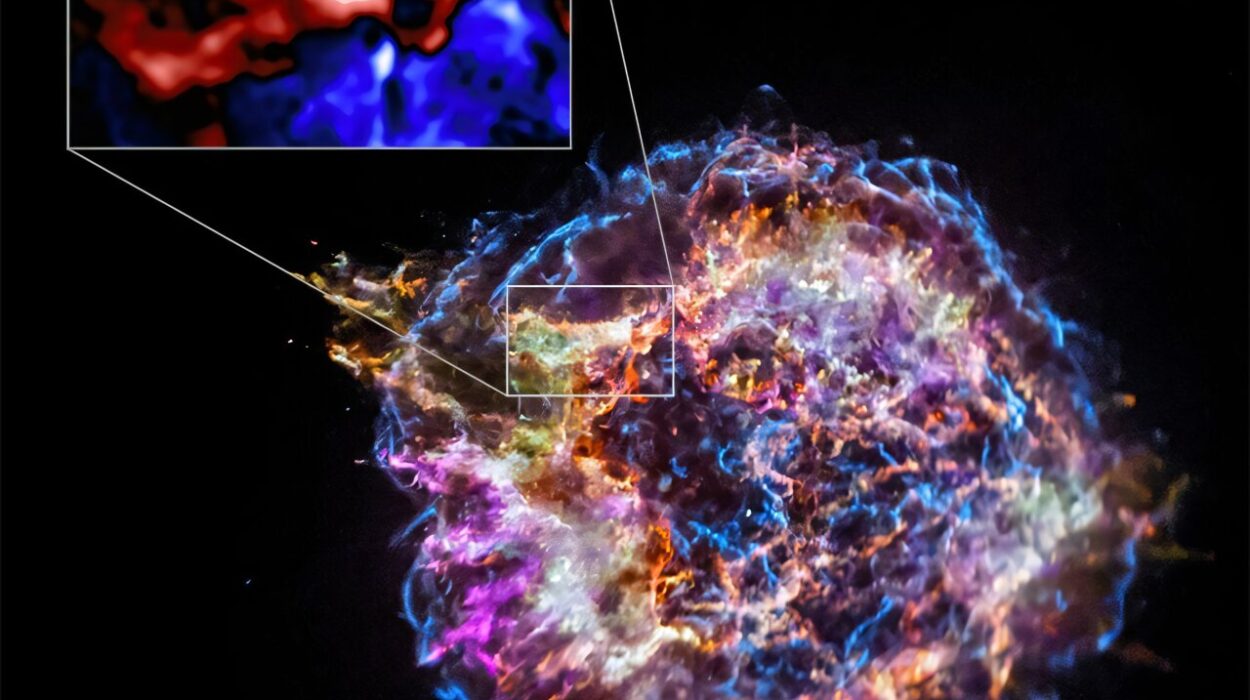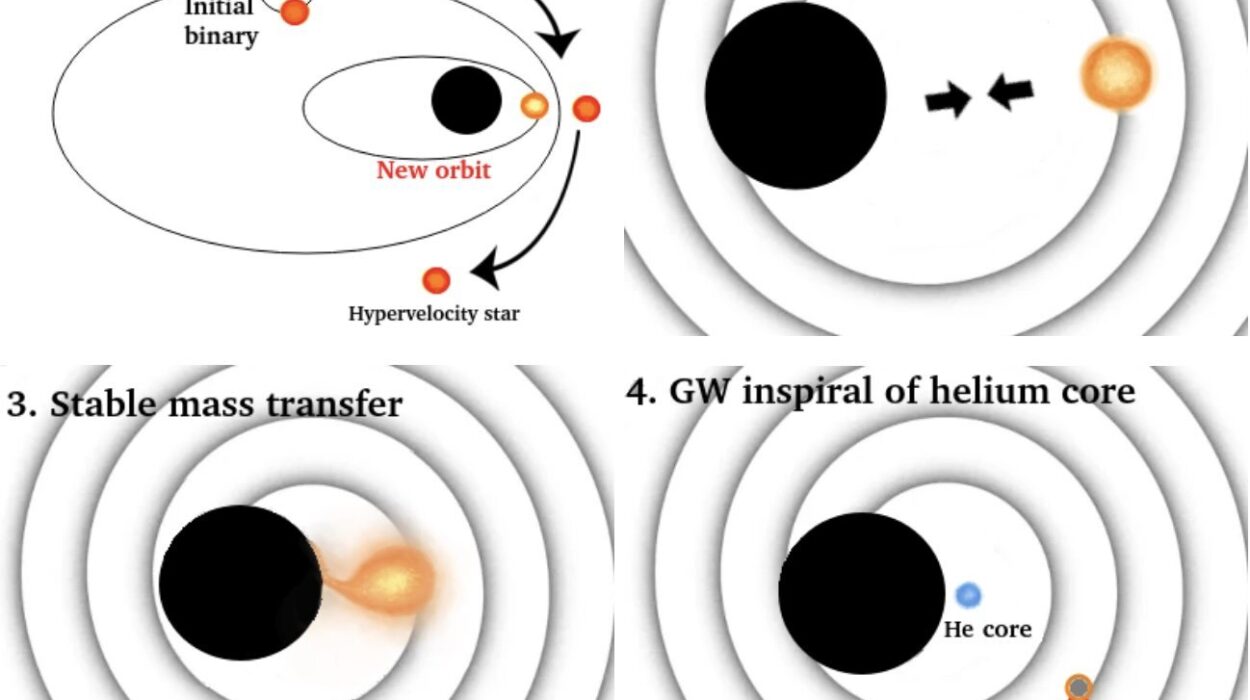Prof. Zhao Yinghe, a distinguished researcher at the Yunnan Observatories of the Chinese Academy of Sciences, along with a team of collaborators, has made a significant contribution to our understanding of molecular gas in galaxies. Their study, published in The Astrophysical Journal, delves into the relationship between two important tracers of molecular gas: the [C II] 158 micron emission line and the CO(1-0) line. This research is particularly valuable because measuring molecular gas, especially the hydrogen molecule (H2), is crucial for understanding star formation and galaxy evolution.
Molecular gas, particularly H2, is essential for the process of star formation, and therefore, understanding its distribution and content in galaxies is a cornerstone of astrophysical research. Star formation is not only a fundamental process in galaxy evolution but also affects the chemical enrichment and structural development of galaxies. In order to estimate the mass of molecular gas in galaxies, astronomers have traditionally relied on the CO(1-0) line, a spectral emission line that corresponds to a rotational transition of carbon monoxide (CO) molecules. However, detecting this line becomes increasingly difficult in the early universe, particularly in high-redshift galaxies. The challenges arise from the lower metallicity of distant galaxies, as well as from other observational limitations, such as lower resolution and sensitivity.
These challenges have led to the need for alternative tracers of H2 mass, particularly as more and more high-redshift galaxies are discovered. High-redshift galaxies, located farther away from Earth and thus observed as they were in the early stages of the universe, present unique opportunities to study galaxy evolution at a time when star formation was more active. For these distant galaxies, new methods are required to measure molecular gas accurately. One such promising alternative is the [C II] 158 micron emission line.
[C II] 158 micron emission is produced by the ionized carbon atom, and it has become an increasingly important tool for tracing the physical conditions in galaxies, especially those at high redshifts. This emission line is much easier to detect compared to the CO(1-0) line, and it is emitted from regions of both atomic and molecular gas. However, despite its promise, earlier studies have faced limitations. Specifically, many past studies lacked a consistent methodology and did not use a sufficiently diverse dataset that spanned a wide range of galaxy types and physical conditions. As a result, the validity of [C II] 158 micron emission as a reliable tracer for total molecular gas has remained uncertain.
Prof. Zhao Yinghe and his collaborators aimed to fill this gap by conducting a comprehensive analysis. They examined a large sample of galaxies, including 200 local galaxies as well as 32 high-redshift galaxies (with redshifts greater than 1). The selection of this wide range of galaxies, covering various physical conditions, was crucial in testing the universality of the [C II]-CO correlation across different types of galaxies. By analyzing galaxies with such diverse properties, the researchers were able to assess the reliability of the [C II] emission as a tracer of molecular gas in galaxies located both nearby and far in the distant universe.
The findings of the study were striking. The team discovered a strong linear correlation between the luminosities of the [C II] and CO(1-0) lines across their entire sample. This result confirmed that the [C II] emission can indeed be used as an effective tracer for the total molecular gas mass in galaxies, including those at high redshifts. However, the study also revealed a subtle difference between galaxies with different luminosities. Ultra-luminous infrared galaxies (ULIRGs), which are characterized by intense star formation and massive amounts of dust and gas, exhibited a slightly different relationship compared to galaxies with lower luminosities. This finding suggests that while the [C II] emission is generally a good tracer of molecular gas, there may be small variations depending on the specific characteristics of the galaxy.
Further investigation revealed that several factors influence the [C II]/CO ratio. One of the key factors is the visual extinction, a measure of the amount of dust and gas that obscures our view of a galaxy. The extinction affects how much of the [C II] emission can be detected and how it relates to the underlying molecular gas. Additionally, the researchers found that the ratio between [C II] and CO depends on the far-ultraviolet (FUV) intensity-to-gas density ratio, which characterizes the balance between the energy provided by stars and the density of the gas in a galaxy. These two factors, the visual extinction and the FUV intensity-to-gas density ratio, together determine the [C II] emission’s ability to trace molecular gas in galaxies.
The study also revealed that the [C II]/CO ratio is related to other key properties of galaxies, such as the surface density of infrared luminosity, which is a measure of the intensity of star formation in a galaxy, and the distance from the star-forming main sequence. The main sequence is a relationship between the star formation rate and the mass of a galaxy, and the position of a galaxy relative to this sequence provides insights into its star formation history. The researchers also found that the proportion of [C II] emission coming from ionized gas plays a role in the [C II]/CO ratio, with galaxies that have a higher contribution of [C II] emission from ionized gas showing a different relationship between the two emission lines.
These findings have important implications for how astronomers use the [C II] emission as a tracer of molecular gas in galaxies. The researchers caution that it is not appropriate to apply a fixed [C II]-to-H2 conversion factor to estimate the H2 mass in all galaxies. In particular, galaxies with extreme star formation activity or those that are far from the main sequence of star formation may require more careful consideration. In these cases, the properties of the galaxy, such as the level of ionized gas or the surface density of infrared luminosity, could significantly affect the accuracy of the H2 mass estimate. Therefore, astronomers must take these factors into account when using [C II] as a molecular gas tracer, especially in extreme galaxies.
The study by Prof. Zhao Yinghe and his team marks a significant advancement in our ability to measure molecular gas in distant galaxies. By confirming that the [C II] 158 micron emission is a reliable tracer of molecular gas, especially in high-redshift galaxies, their research provides a valuable tool for studying the early universe. As more high-redshift galaxies are discovered and observed, this work will continue to play a crucial role in our understanding of galaxy formation and evolution.
Moreover, this research highlights the importance of careful, comprehensive datasets and the need for diverse galaxy samples in astrophysical studies. By taking into account the various physical conditions that influence the relationship between different emission lines, astronomers can develop more accurate methods for measuring the properties of galaxies, which in turn will provide deeper insights into the processes that drive galaxy evolution across cosmic time.
Reference: Yinghe 应和 Zhao 赵 et al, Ionized Carbon in Galaxies: The [C ii] 158 μm Line as a Total Molecular Gas Mass Tracer Revisited, The Astrophysical Journal (2024). DOI: 10.3847/1538-4357/ad8c3e
